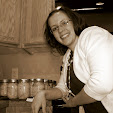Here's some tips for MEAL PLANNING!!
-Have a list of meals your family likes. (Don't feel bad if ramen noodles or Hamburger Helper is on your list)
-Space out similar meals. For example, you may not want to have spaghetti and lasagna in the same week. This is on reason I prefer planning for the whole month. I would make breakfast food every other day if I could but my husband doesn't love that, so I plan on one breakfast food meal a week.
-Plan for a leftover night. We usually have one day a week when we need to clean out the fridge. It doesn't always fall on the same day every week, so I have to be flexible, but I LOVE leftover night.
-Plan for new recipes! To shake things up a little, plan a new recipe once a week or once every other week. This can help you find new favorites for your meal list. (Remember to use recipes that include your food storage, so you can learn HOW to use ingredients you may not be used to and so that your food gets rotated.)
-Use a blank calendar and/or make a list of all the meals. A few months ago I was writing meals done on a blank calendar that I printed from Word. I liked this way. Lately, I have just been writing a big list of what I have ingredients for so I can cook whatever I feel like that night.
I also like to keep track of what I actually ended up making (or if we ate out) so that when I am meal planning I can remember what we've had most recently and try to plan so different meals. I have a binder with my calendars and lists so I can look through it quickly. My favorite recipes are also in this binder and print outs or notes about recipes I want to try.
Meal planning helps me to feel a little more in control of my day, helps with my general sanity, and saves me money because I'm not going to the store every other day for things I need.
HAPPY PLANNING!
*This is an update post from earlier this year, I know. But I think it's good to review. :)



